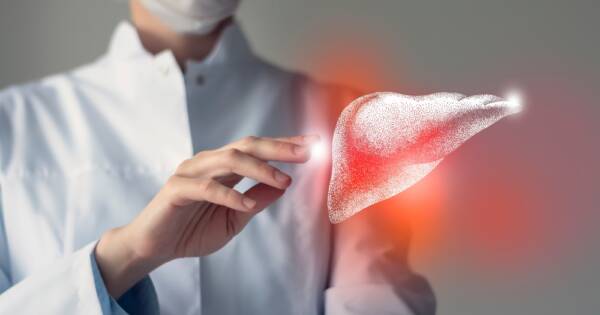Nonalcoholic steatohepatitis (NASH) is emerging as a pressing health issue linked with lifestyle factors such as obesity and type 2 diabetes, with potential to become a leading cause of liver transplants. Understanding NASH involves exploring FDA-approved treatments like Rezdiffra, the critical role of lifestyle changes, and overcoming diagnostic challenges. Insights into these areas offer hope for managing NASH effectively, providing an informed path forward in treatment and prevention.
Understanding NASH Liver Disease: A Growing Concern
NASH, or nonalcoholic steatohepatitis, is a serious and progressive form of nonalcoholic fatty liver disease (NAFLD) characterized by liver inflammation and scarring. It is becoming increasingly common, closely linked with obesity, type 2 diabetes, and metabolic syndrome as significant risk factors.
Given these associations, NASH is expected to overtake other liver diseases as a leading cause of liver transplants and liver cancer. The most challenging aspect of dealing with NASH is its asymptomatic nature, making it difficult to diagnose without invasive procedures such as liver biopsies being a common diagnostic tool. With NASH’s growing prevalence, effective treatment methods need to be properly understood and widely adopted.
FDA-Approved Treatments and Research Developments
The treatment landscape for NASH has seen groundbreaking changes with the FDA approval of Rezdiffra, the first drug specifically for NASH. This drug has shown promising results in clinical trials, improving liver scarring in a significant number of patients and resolving symptoms of the disease in a sizable portion of cases depending on the dosage. However, Rezdiffra is not without its side effects, including gastrointestinal issues and potential liver toxicity, requiring careful patient monitoring during treatment.
In addition to pharmacological advances, a multitude of drugs aimed at targeting metabolic pathways and liver fibrosis are under investigation in advanced clinical trials, with promising candidates focusing on combination therapies. These innovative treatments offer hope to those affected by NASH, paving the way for more comprehensive and effective treatment strategies.
Role of Lifestyle Changes and Preventative Measures
In conjunction with medicinal treatments, lifestyle modification remains a cornerstone in managing NASH. Weight loss is particularly emphasized, as even a modest reduction of 3% to 5% in body weight can significantly decrease liver fat, inflammation, and fibrosis.
Patients are encouraged to follow a balanced diet, limit portion sizes, and increase their physical activity levels. Physical exercise not only aids in weight loss but also independently improves liver health by itself. Adopting stable lifestyle habits can prevent the progression of NAFLD to NASH, highlighting the importance of early intervention and regular health screenings.
Challenges in Diagnosis and Importance of Early Screening
Despite advances in treatment, diagnosing NASH remains a challenge. The disease is typically identified through elevated liver enzyme levels in blood tests or imaging showing a fatty liver, but a definitive diagnosis often requires a liver biopsy. This procedure, although reliable, is invasive and not without risks, underscoring the urgent need for non-invasive diagnostic methods.
Emerging imaging technologies and biomarkers are showing promise in facilitating early and accurate diagnoses, potentially identifying patients at risk without the need for biopsy via new tests like FIB-4 and FibroScan. As the understanding of NASH pathology advances, early detection and diagnosis could play a pivotal role in effectively managing the disease and preventing severe outcomes such as cirrhosis and liver cancer.
Future Directions in NASH Treatment
The future of NASH treatment lies in a comprehensive approach, combining emerging pharmaceutical solutions with lifestyle interventions. Drugs currently in Phase III trials, such as Lanifibranor and GLP1-receptor agonists, exhibit potential in reducing fibrosis and resolving disease symptoms through detailed study. These medications could form part of combination therapies that provide a holistic treatment strategy, addressing various components of the disease process. The identification of non-invasive biomarkers to track and personalize treatment progress is also anticipated to improve management outcomes. These developments, coupled with a focus on preventive healthcare and education, are set to transform NASH treatment practices in the coming years.
Why You Should Learn More About NASH Treatments Today
With NASH rapidly becoming a leading cause of liver damage and transplant needs, understanding its treatments is critical. Awareness of FDA-approved drugs such as Rezdiffra and ongoing research into new therapies is of utmost importance for both patients and healthcare providers. Equally vital is the role of lifestyle changes, emphasizing the power of weight management, diet, and exercise in combating this disease.
Early detection through improved diagnostic technologies presents an opportunity to manage and potentially reverse damage caused by NASH. As awareness and research grow, so does the possibility of eradicating the severe consequences associated with this liver condition, offering hope and improved quality of life for many patients.
Sources
Insight into the FDA Approval of Rezdiffra for NASH
Understanding the Rising Prevalence and Diagnostic Challenges of NASH



